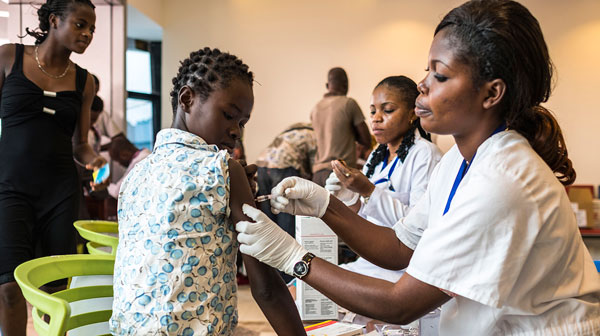
Yellow fever in Angola and the DRC officially contained – travellers still require immunisation

Travellers to and from Angola and the Democratic Republic of the Congo (DRC) are still required to get yellow fever immunisation despite Angola declaring the end of the epidemic in December last year, and the DRC this week.
The World Health Organization confirmed this week that no new cases were reported from either country for the past six months.
Yellow fever was first detected in Angola at the end of 2015 from where it spread across the border into the DRC. In August 2016 as the rainy season started, the biggest ever yellow fever emergency vaccination campaign in Africa was carried out. More than 7 million people in Kinshasa province were successfully vaccinated in just two weeks but in the remote areas on the Angola border, the campaign took longer targeting a further 3 million people at risk.
“We are able to declare the end of one of the largest and most challenging yellow fever outbreak in recent years through the strong and coordinated response by national authorities, local health workers and partners,” said Dr Matshidiso Moeti, the World Health Organization’s Regional Director for Africa.
The outbreak caused 965 confirmed cases of yellow fever across the two countries, with thousands more cases suspected. The last case detected in Angola was on 23 June 2016 and the DRC on 12 July 2016.
Altogether, more than 30 million people were vaccinated in emergency vaccination campaigns. In the isolated border areas between the DRC and Angola, vaccinations had to continue until the end of 2016.
More than 41 000 volunteers and 8000 vaccination teams with more than 56 NGO partners were involved in the mass immunization campaigns. The vaccines came from a global stockpile co-managed by Médecins Sans Frontières (MSF), International Federation of the Red Cross and Red Crescent Societies (IFRC), UNICEF and WHO. In the first 6 months of 2016 alone, the partners delivered more than 19 million doses of the vaccine – three times the 6 million doses usually put aside for an outbreak.
Announcing the end of the epidemice, WHO said the first cases were identified on 5 December 2015 in Viana, Luanda Province, Angola. The outbreak spread to the entire country and to neighbouring Democratic Republic of the Congo, where local transmission was established in March 2016.
From the start of the outbreak, Angola reported a total of 4306 suspected cases and 376 deaths, of which 884 cases and 121 deaths were laboratory confirmed.
In this outbreak, the DRC has reported 2987 suspected cases, with 81 laboratory confirmed cases and 16 deaths.
In addition to the mass vaccination campaigns, WHO and partners continue to provide support to Angola and the DRC to strengthen disease surveillance, to control the spread of mosquitoes and engage communities so that they can protect themselves.
The vaccination campaigns were made possible with the financial support of the German, Japanese and Angolan governments, Gavi, the Vaccine Alliance, BioManguinhos, the Central Emergency Response Fund, the WHO International Coordination Group Revolving Fund, USAID and the Contingency Fund for Emergencies.
(Photograph by E. Soteras Jalil of the World Health Organization)












































